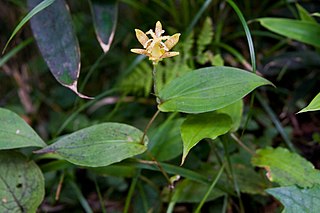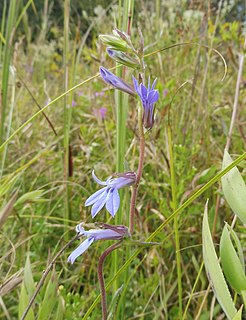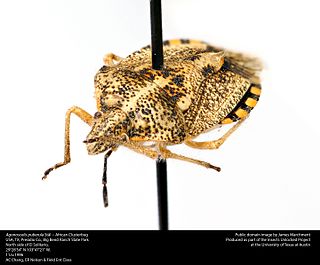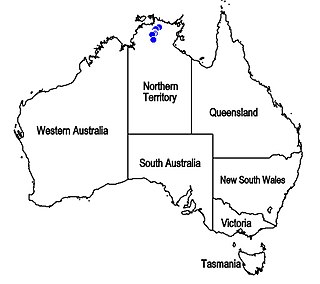
Ocotea is a genus of flowering plants belonging to the family Lauraceae. Many are evergreen trees with lauroid leaves.
Melicope puberula, the hairy melicope, is a species of plant in the family Rutaceae. It is endemic to the Hawaiian Islands. Like other Hawaiian Melicope, this species is known as alani. In 2010 it was added to the endangered species list of the United States.
Ocotea puberula is a species of evergreen tree in the plant genus Ocotea of the family Lauraceae. It is found in Argentina, Brazil, French Guiana, Guyana, Mexico, Peru, and Suriname.
Pouteria puberula is a species of plant in the family Sapotaceae. It is endemic to Venezuela.
Sculptotheca puberula is a species of beetle in the family Ptinidae.

Tricyrtis latifolia, the toad lily, is an East Asian species of plants in the lily family.

Christella puberula, synonym Thelypteris puberula, is a species of fern known by the common name showy maiden fern. The variety Ch. puberula var. sonorensis is known by the common name Sonoran maiden fern.
Tricyrtis puberula is a Chinese species of plants in the lily family. It is found in the Provinces of Hebei, Henan, Hubei, Shaanxi, and Sichuan.

Lobelia puberula, or downy lobelia, is a perennial herbaceous wildflower in the Bellflower family (Campanulaceae) native to eastern and south central United States. It is the most common blue-flowered Lobelia in the Southeast. It grows in mesic to hydric (moist) habitats in sun or partial shade.
Pterostylis puberula, commonly known as the dwarf greenhood or snail greenhood is a species of orchid which is endemic to New Zealand. It has a rosette of pale yellowish, stalked leaves and a single silvery-white and green flower with relatively long, erect lateral sepals.

Fimbristylis puberula, commonly called hairy fimbry, is a species of flowering plant in the sedge family (Cyperaceae). It is native to North America, where it has a widespread, but patchy, distribution. The largest populations are in the Southeastern Coastal Plain and the eastern Great Plains. Its natural habitat is in prairies, savannas, and glades. It can be found on both basic and acidic soil.

Formica puberula is a species of ant in the family Formicidae.
Borboropsis is a genus of flies in the family Heleomyzidae. There are at least four described species in Borboropsis.
Diplotaxis puberula is a species of scarab beetle in the family Scarabaeidae. It is found in Central America and North America.
Zeugophora puberula is a species of megalopodid leaf beetle in the family Megalopodidae. It is found in North America.
Monoxia is a genus of skeletonizing leaf beetles in the family Chrysomelidae. There are about 18 described species in Monoxia. They are found in North America and the Neotropics.

Agonoscelis puberula, the African cluster bug, is a species of stink bug in the family Pentatomidae. It is found in the Caribbean, Central America, and North America.

Gennadota is a genus of rove beetles in the family Staphylinidae. There are at least two described species in Gennadota.

Pityrodia puberula is a flowering plant in the mint family Lamiaceae and is endemic to Arnhem Land in the Northern Territory. It is a straggling shrub with narrow, hairy leaves arranged in four rows and off-white, bell-like flowers with dark purple streaks.
Premna puberula is a species of plant in the family Lamiaceae that is endemic to Central and South China.








